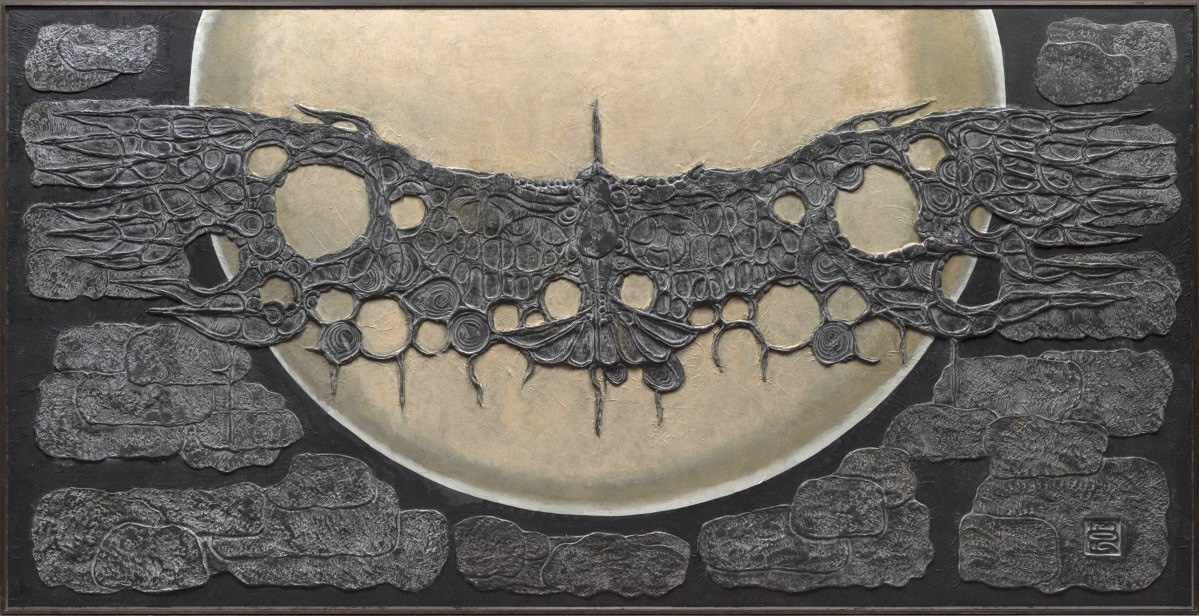painting masters. His artistic journey was interrupted by World War II, during which he was conscripted in 1943. Upon his return in 1946, Shimomura sought to forge a new path, unbound by conventional techniques and themes.
In 1949, he co-founded the Pan-real Art Association, challenging the rigid structures of the Japanese art establishment. Shimomura experimented with a variety of mediums, including colored chalk and clay, an approach which soon gained international acclaim, leading to invitations to prestigious exhibitions, including the Carnegie International in 1958 alongside founder of the Gutai Movement, Yoshihara Jirō and the 8th São Paulo Biennial in 1965.
Shimomura’s work evolved from cubist-inspired social commentary to a profound exploration of the motif of birds— from dissection-like fossil images, before moving beyond to capturing the mysterious aura of animal vitality coupled with the spirituality of flight. By the early 1960s, he pioneered a distinctive paper clay technique using water-based adhesive, layering clay onto panels, covering it with thin hemp paper, molding shapes with custom wooden forms, and applying pigments to achieve a striking dimensionality. This meticulous method resulted in monumental works imbued with depth, movement, and spiritual intensity.
Beyond painting, Shimomura’s creative legacy extends to printmaking and ceramics, showcasing his versatility and unyielding curiosity of materiality. Even after suffering a stroke in 1993, his dedication to his craft remained unwavering, and he continued producing large-scale works until his final exhibition in 1998.
Shimomura Ryōnosuke
1923—1998







